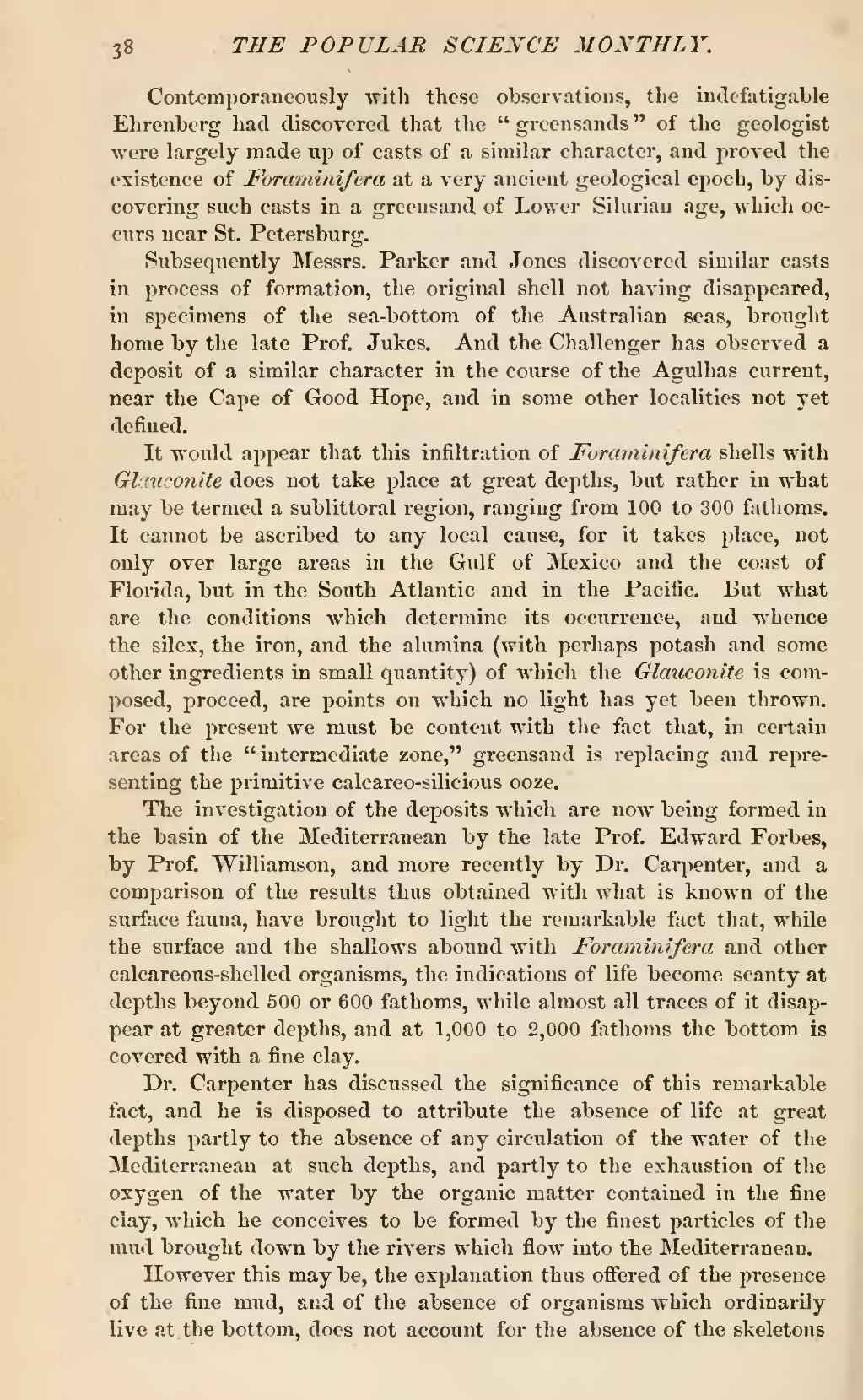Contemporaneously with these observations, the indefatigable Ehrenberg had discovered that the "greensands" of the geologist were largely made up of casts of a similar character, and proved the existence of Foraminifera at a very ancient geological epoch, by discovering such casts in a greensand of Lower Silurian age, which occurs near St. Petersburg.
Subsequently Messrs. Parker and Jones discovered similar casts in process of formation, the original shell not having disappeared, in specimens of the sea-bottom of the Australian seas, brought home by the late Prof. Jukes. And the Challenger has observed a deposit of a similar character in the course of the Agulhas current, near the Cape of Good Hope, and in some other localities not yet defined.
It would appear that this infiltration of Foraminifera shells with Glauconite does not take place at great depths, but rather in what may be termed a sublittoral region, ranging from 100 to 300 fathoms. It cannot be ascribed to any local cause, for it takes place, not only over large areas in the Gulf of Mexico and the coast of Florida, but in the South Atlantic and in the Pacific. But what are the conditions which determine its occurrence, and whence the silex, the iron, and the alumina (with perhaps potash and some other ingredients in small quantity) of which the Glauconite is composed, proceed, are points on which no light has yet been thrown. For the present we must be content with the fact that, in certain areas of the "intermediate zone," greensand is replacing and representing the primitive calcareo-silicious ooze.
The investigation of the deposits which are now being formed in the basin of the Mediterranean by the late Prof. Edward Forbes, by Prof. Williamson, and more recently by Dr. Carpenter, and a comparison of the results thus obtained with what is known of the surface fauna, have brought to light the remarkable fact that, while the surface and the shallows abound with Foraminifera and other calcareous-shelled organisms, the indications of life become scanty at depths beyond 500 or 600 fathoms, while almost all traces of it disappear at greater depths, and at 1,000 to 2,000 fathoms the bottom is covered with a fine clay.
Dr. Carpenter has discussed the significance of this remarkable fact, and he is disposed to attribute the absence of life at great depths partly to the absence of any circulation of the water of the Mediterranean at such depths, and partly to the exhaustion of the oxygen of the water by the organic matter contained in the fine clay, which he conceives to be formed by the finest particles of the mud brought down by the rivers which flow into the Mediterranean.
However this may be, the explanation thus offered of the presence of the fine mud, and of the absence of organisms which ordinarily live at. the bottom, does not account for the absence of the skeletons

